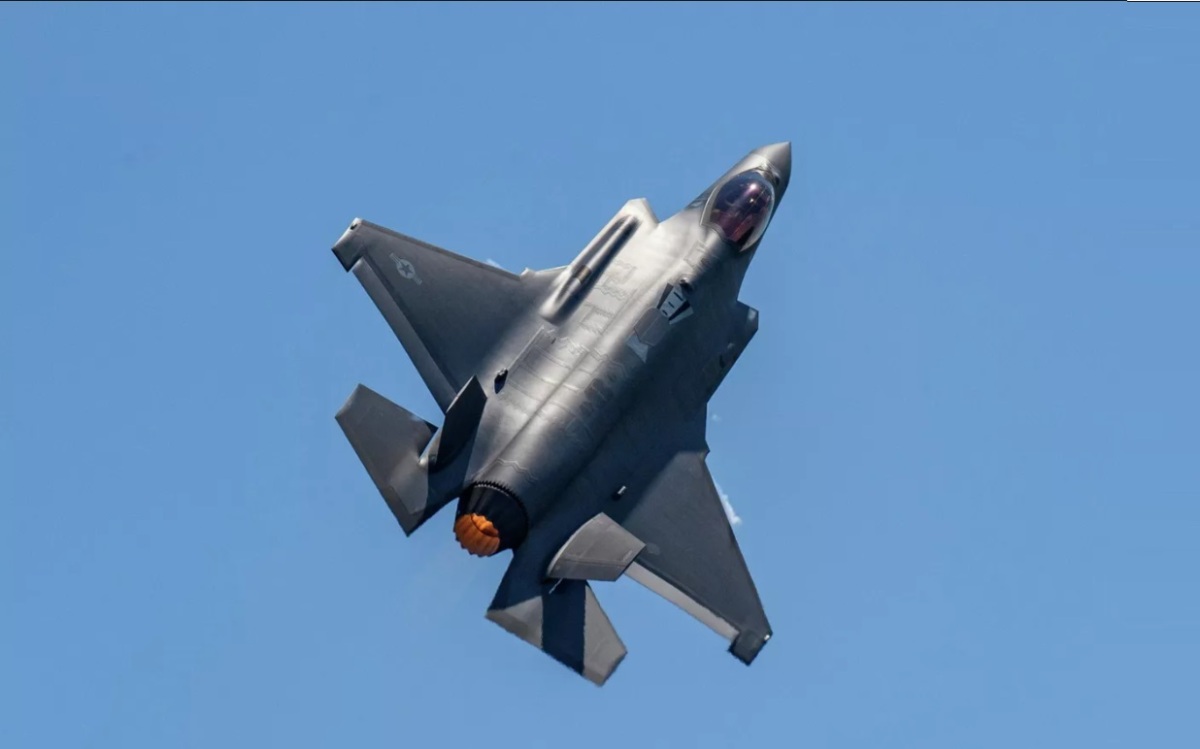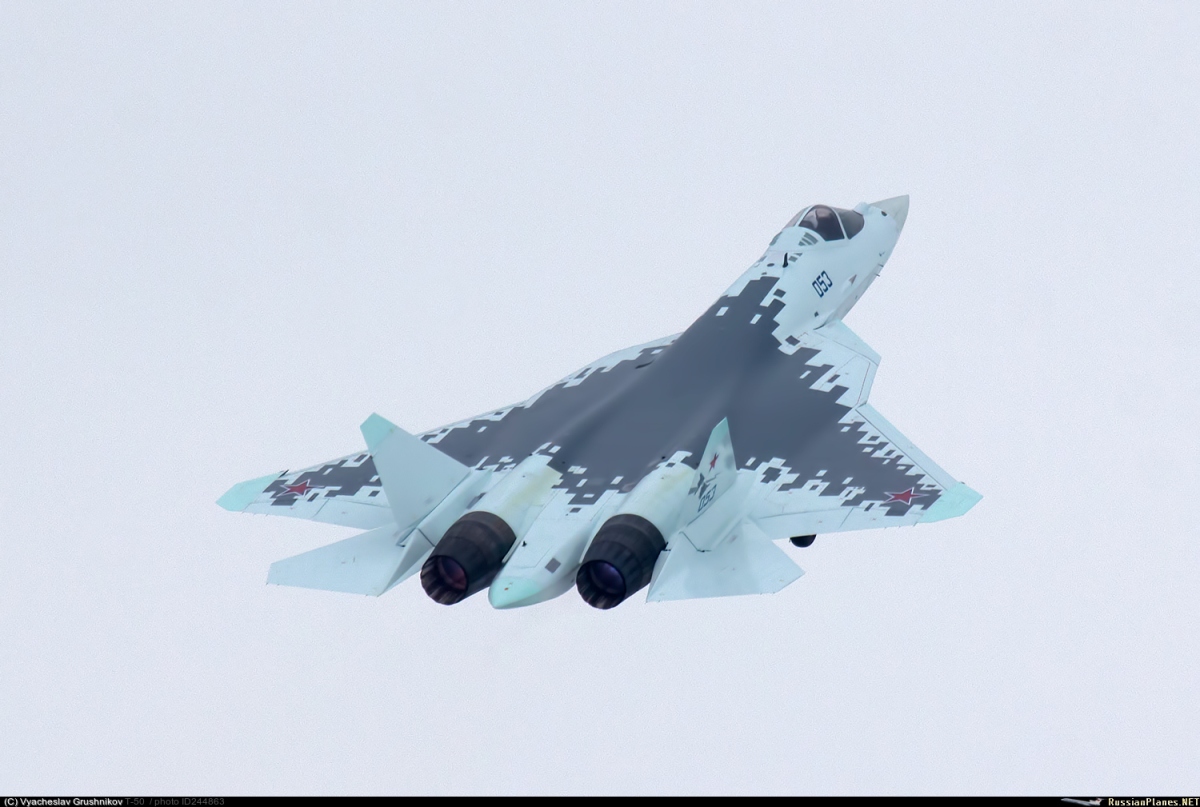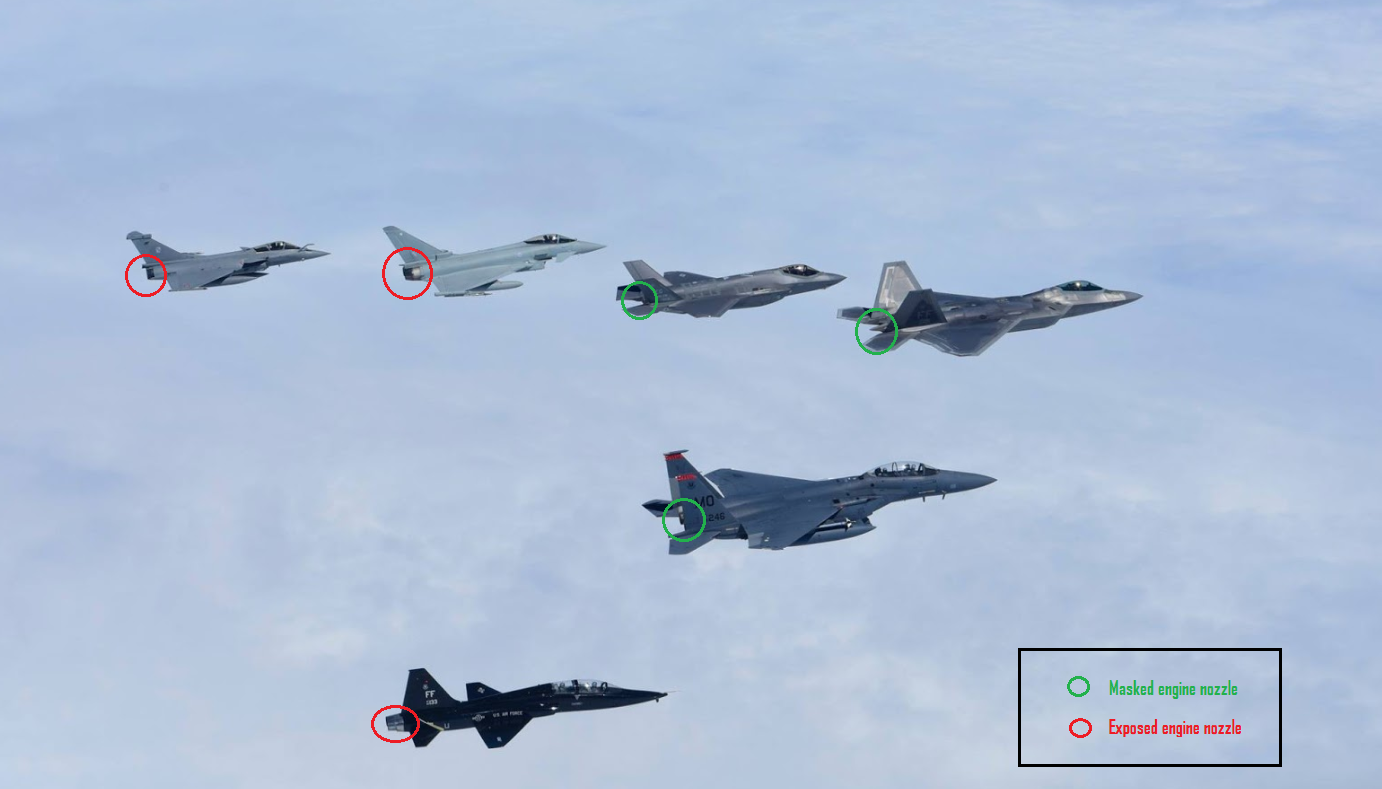Gyyan
New Member
- Joined
- Nov 21, 2022
- Messages
- 1,469
- Likes
- 9,313
You don't get the context anyway dumb bitches like you have their own benefits in narrative planting.WS-15 is a heavy engine -- 180kN
WS-19 is China's 110kN medium engine
You don't get the context anyway dumb bitches like you have their own benefits in narrative planting.WS-15 is a heavy engine -- 180kN
WS-19 is China's 110kN medium engine
抱歉,我们这里没有人能读懂或听懂中文。
即使您写的是我们的屁股,我们也无法真正理解,因此英语或印地语视频会比任何中文 bs 更有帮助。
[/引用]

this articles are mostly generalizations, no aircraft is invisible to radar,You are welcome, btw there are also version for F-35 and Su-57

F-35A Radar scattering simulation
Introduction F-35 is the backbone of American stealth fighter fleet, it is intended to replace F-16, F-18C/D, Harrier and A-10. There are currently 3 versions of F-35 which are F-35A, F-35B and F-3…basicsaboutaerodynamicsandavionics.wordpress.com

Su-57 Radar scattering simulation
Introduction Su-57 is the first aircraft in Russian military service designed with stealth technology, it is intended to replace Su-27/30/35 family and server as the Russian answer to the American …basicsaboutaerodynamicsandavionics.wordpress.com
No where do the papers suggest stealth jets are "invisible to radar".this articles are mostly generalizations, no aircraft is invisible to radar,
most is propaganda, and most articles are not really based upon sound physics, Stealth helps but is not really as people think
TheSu-35 for example has and Infrared detection capability and some radars on frequencies that makes hard for even F-22 difficult to hide, the Su-35 downed in Ukraine has its IRST system sent to the west to find its capabilities since its capable of detecting a F-35 at 90 km
I think you misunderstand what is the whole definition of stealth when we refer to Stealth aircrafts, stealth does not mean absolute invisibility and no one is saying that if any aircraft is "Stealth" then it is completely invisible to any radar. Stealth is only reduced detection, the whole point of stealth is that you will have a RCS low enough that you are able to get close enough to your target, shoot your weopons (i.e missiles, bombs etc) before you are detected and the enemy does the same to you, basically you want a "look first & shoot first" capability. Any radar in this world can detect and track any stealth aircraft, for example even a MiG-21's radar would be able to detect & track an F-22 but the distance at which that would happen would be tactically irrelevant since the F-22 would have detected the MiG-21 and already fired its missiles at the MiG-21 long before the MiG-21 would have any clue as to what is happening.this articles are mostly generalizations, no aircraft is invisible to radar,
most is propaganda, and most articles are not really based upon sound physics, Stealth helps but is not really as people think
TheSu-35 for example has and Infrared detection capability and some radars on frequencies that makes hard for even F-22 difficult to hide, the Su-35 downed in Ukraine has its IRST system sent to the west to find its capabilities since its capable of detecting a F-35 at 90 km
No where does it suggest that any aircraft is invisible to radar, and stealth has never been about being absolutely invisible. Stealth is simply about reducing enemy detection range so that you can engage them before they can do the same.this articles are mostly generalizations, no aircraft is invisible to radar,
most is propaganda, and most articles are not really based upon sound physics, Stealth helps but is not really as people think
Irbis-E operate in X-band (8-12 GHz) so pretty much the optimum frequency for stealth aircraft.TheSu-35 for example has and Infrared detection capability and some radars on frequencies that makes hard for even F-22 difficult to hide
To be honest, it really doesn't help your case when you have to make up story as an attempt to support your point. The detection range of OLS-35 is 90 km only against big target such as Su-30, and only from the rear aspect. If the two aircraft are flying toward each other, then the detection range reduced to only 35 km. To make matter worse, to be able to launch missile, you need to measure distance to target and their velocity. On OLS-35, it would be done by the laser range finder system, and the range of this system is only 20 kmthe Su-35 downed in Ukraine has its IRST system sent to the west to find its capabilities since its capable of detecting a F-35 at 90 km










MiG-21 is an aircraft, but the radar does the detectionI think you misunderstand what is the whole definition of stealth when we refer to Stealth aircrafts, stealth does not mean absolute invisibility and no one is saying that if any aircraft is "Stealth" then it is completely invisible to any radar. Stealth is only reduced detection, the whole point of stealth is that you will have a RCS low enough that you are able to get close enough to your target, shoot your weopons (i.e missiles, bombs etc) before you are detected and the enemy does the same to you, basically you want a "look first & shoot first" capability. Any radar in this world can detect and track any stealth aircraft, for example even a MiG-21's radar would be able to detect & track an F-22 but the distance at which that would happen would be tactically irrelevant since the F-22 would have detected the MiG-21 and already fired its missiles at the MiG-21 long before the MiG-21 would have any clue as to what is happening.
View attachment 186294
Ofcource it's the aircraft's radar that does the detection, no one is suggesting otherwise. More the powerful a radar, the better it will be at tracking objects from a far away distance/which have very low RCS as in stealth planes (i.e Su-57, F-22, F-35, J-20, F-117 etc). For example lets take the example of a MiG-21 & MiG-31. The MiG-21 can use for e.g RP-21 Sapfir radar system, the MiG-31 on the other hand can use Phazotron PESA radar, the Phazotron on the MiG-31 is much more powerful than the RP-21 radar on the MiG-21 and therefore it will be able to detect any target further away and before the RP-21 would be able to do the same.MiG-21 is an aircraft, but the radar does the detection
View attachment 186362
Pt is the power of the radar thus detection is directly related since it is a multiplication to the power of the transmitting radar, more power higher detectability, the formula shows Irbis will detect at longer range than the small radar of MiG-21the same target F-22.
The radar range equation represents the physical dependences of the transmit power, which is the wave propagation up to the receiving of the echo signals. The power Pe returning to the receiving antenna is given by the radar equation, depending on the transmitted power PS, the slant range R, and the reflecting characteristics of the aim (described as the radar cross section σ). At the known sensibility of the radar receiver, the radar equation determines the achieved by a given radar theoretically maximum range. Furthermore one can assess the performance of the radar set with the radar range equation (or shorter: the radar equation).
https://www.radartutorial.eu/01.basics/The Radar Range Equation.en.html
RCS only represents the scattering or reflection of the electromagnetic waves angular direction or spikes.
Consider the transmitting wave length, since each wave length has different range, thus on stealth fighters, larger radar waves have longer detection range
you seem to think a hot nozzle can be hidden easily, that is not the fact, for starters J-20 has round nozzles where the hot part, afterburner is easily seen and open to external detection and so is F-35No where does it suggest that any aircraft is invisible to radar, and stealth has never been about being absolutely invisible. Stealth is simply about reducing enemy detection range so that you can engage them before they can do the same.
And no, the article is not a "generation", I would dare say that it is as accurate and non bias as you can get without access to the actual physical airframe.
Irbis-E operate in X-band (8-12 GHz) so pretty much the optimum frequency for stealth aircraft.
If you are referring to the Tikhomirov NIIP L-band on the leading edge of Su-35, then keep in mind that it is not a radar but rather an IFF system, it only has 1 row of T/R modules, which mean it can't even steer vertically to determine target height. Furthermore, given that beam width is directly proportional to wavelength and inversely proportional to antenna area, a L-band antenna of that size will generate a radio beam so wide that it is effectively useless for target direction finding.
To be honest, it really doesn't help your case when you have to make up story as an attempt to support your point. The detection range of OLS-35 is 90 km only against big target such as Su-30, and only from the rear aspect. If the two aircraft are flying toward each other, then the detection range reduced to only 35 km. To make matter worse, to be able to launch missile, you need to measure distance to target and their velocity. On OLS-35, it would be done by the laser range finder system, and the range of this system is only 20 km

speed is another fact faster means hotterNo where does it suggest that any aircraft is invisible to radar, and stealth has never been about being absolutely invisible. Stealth is simply about reducing enemy detection range so that you can engage them before they can do the same.
And no, the article is not a "generation", I would dare say that it is as accurate and non bias as you can get without access to the actual physical airframe.
Irbis-E operate in X-band (8-12 GHz) so pretty much the optimum frequency for stealth aircraft.
If you are referring to the Tikhomirov NIIP L-band on the leading edge of Su-35, then keep in mind that it is not a radar but rather an IFF system, it only has 1 row of T/R modules, which mean it can't even steer vertically to determine target height. Furthermore, given that beam width is directly proportional to wavelength and inversely proportional to antenna area, a L-band antenna of that size will generate a radio beam so wide that it is effectively useless for target direction finding.
To be honest, it really doesn't help your case when you have to make up story as an attempt to support your point. The detection range of OLS-35 is 90 km only against big target such as Su-30, and only from the rear aspect. If the two aircraft are flying toward each other, then the detection range reduced to only 35 km. To make matter worse, to be able to launch missile, you need to measure distance to target and their velocity. On OLS-35, it would be done by the laser range finder system, and the range of this system is only 20 km

No where does it suggest that any aircraft is invisible to radar, and stealth has never been about being absolutely invisible. Stealth is simply about reducing enemy detection range so that you can engage them before they can do the same.
And no, the article is not a "generation", I would dare say that it is as accurate and non bias as you can get without access to the actual physical airframe.
Irbis-E operate in X-band (8-12 GHz) so pretty much the optimum frequency for stealth aircraft.
If you are referring to the Tikhomirov NIIP L-band on the leading edge of Su-35, then keep in mind that it is not a radar but rather an IFF system, it only has 1 row of T/R modules, which mean it can't even steer vertically to determine target height. Furthermore, given that beam width is directly proportional to wavelength and inversely proportional to antenna area, a L-band antenna of that size will generate a radio beam so wide that it is effectively useless for target direction finding.
To be honest, it really doesn't help your case when you have to make up story as an attempt to support your point. The detection range of OLS-35 is 90 km only against big target such as Su-30, and only from the rear aspect. If the two aircraft are flying toward each other, then the detection range reduced to only 35 km. To make matter worse, to be able to launch missile, you need to measure distance to target and their velocity. On OLS-35, it would be done by the laser range finder system, and the range of this system is only 20 km

you don't necessary need square nozzle to mask the hot flame, the vertical stabilator can do that task as well. And besides, if two aircraft flying toward each other then the nozzle will be maskedyou seem to think a hot nozzle can be hidden easily, that is not the fact, for starters J-20 has round nozzles where the hot part, afterburner is easily seen and open to external detection and so is F-35


You are basically arguing something that everybody already know. Yes, the exhaust nozzle is hotter than the aircraft skin. That why OLS-35 can detect Su-30 at distance of 90 km from the rear but only 35 km from the frontal aspectspeed is another fact faster means hotter
View attachment 186369
aircraft as they travel generate heat, stealth aircraft do it too, on space shuttles the heat barrier was made to do not melt the fuselage of the space shuttles but air remain hot
See that is just the airframe
View attachment 186370
see the exhaust nozzle is far much hotter


| Thread starter | Similar threads | Forum | Replies | Date |
|---|---|---|---|---|
| S | Recent Analysis on J20 from Aviation Week-"Chinese J-20 Stealth Fighter Advances" | China | 10 | |
|
|
CAN THE S400 SHOOT DOWN A F22, F35, J20... ? | Indian Air Force | 2 | |
|
|
J20 Shock to PLAAF | China | 311 | |
| B | china to start limited production of j20 and to induct them in 2017-18 | China | 2 |
